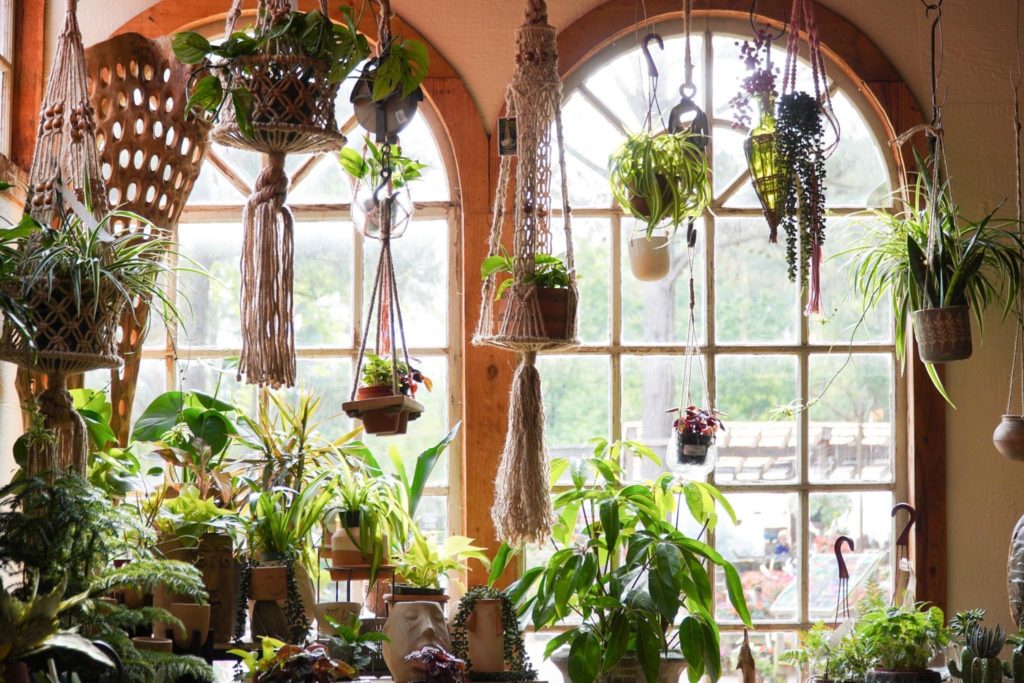Let There Be Light: Houseplant Lighting Explained
Let there be light
Having houseplants in your home is uplifting, and helps make a home cozy. We want plants to soften our rooms and provide fresh air.
Lighting can play a big role in the placement of plants for our interiors, and it is interesting to note that the words used for outside areas are different than for growing inside. Shade, part sun and full sun are often used to be a guideline for our flower beds and bright light, low light and indirect light are used for inside our homes.
We horticulturists don’t mean to be tricky or confusing, we just know that light levels change dramatically once we go inside.
Lets face it, when looking to add plants to our homes, we have a specific spot in mind. We will look at houseplant placement in such a way to come to an understanding how light levels can influence where you put them, your plants will thank you!
Far, Far Away
This is when you want to put your houseplants far, far away from windows. Sometimes this works out and other times it doesn’t. You can put a plant far away from a window, but it will need to be a low light because the light levels get dimmer as you cross a large room.
What if you have a whole wall of windows and you want to put your plant far away from them? Yes, that works, and you may be able to have more choices than just low light plants because of all the windows. It will much brighter most likely than just one window.
An example of when this approach doesn’t work out is when you have a regular sized window and want to grow succulents far, far away from that window.
Consider this: are there trees outside shading that window, or an awning, or what if you never open the curtains? If you answered yes to any of these you are most likely to need a plant with low light needs and will need to bring the plant much closer to the window. If the window faces north (which has the darkest light levels) and has trees blocking the light, you will need to put your low light plant as close to the window as possible.
You know that dark corner of the living room you want to “brighten” up with a plant? If you can’t sit there and read the newspaper then a plant won’t work there. It’s called a dark corner for a reason, eh?
Low Light definition: North facing windows, windows with trees shading them, or far far away from a window can qualify as low light. It would be difficult to read without the lights on.
Up Close and Personal
This is the other end of lighting where we place plants on window sills, plant stands or on end tables right in or next to the window. Take note of just how much light is coming through. Not all window light is equal, folks! You might be asked which direction the window faces. It can be a bit daunting especially for gardening newbies. Generally speaking plants that need little to low sunlight needs can’t handle a window with blazing sun coming through it such as a south or west facing window. It is sunny and hot! There are some plants that don’t mind this kind of spot one bit. Perhaps you have a window in the kitchen where no sun comes through such as the north side of the house, can you put plants there? Sure, you betcha, some lovely low light plants will add some charm to that kitchen window. But we all want to grow herbs in the kitchen, right?! Will that work in that north, no light coming in window? Nope. Remember that hot sunny south/west facing window where the sun pours in? That will work.
High light or direct light definition: South facing windows provide the longest duration of bright light year round. East and west windows also fall into high light/direct light. You can easily read sitting close to that window.
Neither here nor there
This category usually winds up being in the middle of room, or entryways leading to a different room. Maybe the spot you have isn’t 10 feet away from the light, but isn’t on the window sill either. Indirect light is often used for these middle ground areas. Indirect light is nice bright light coming through but with no actual sunlight hitting the leaves. Maybe you have a bank of 5 windows in your living room, facing the morning sun on the east side of your home. Well, that will most likely make the middle part of your home bright enough to put a plant on your coffee table.
Indirect light definition: No sunlight hitting the plant directly.
Low Light plant suggestions are: Cast iron, Sansevieria, ZZ plant, Aglaonema(Chinese Evergreen) and Pothos.
Bright light: All the plants listed above plus Anthurium (personal fave), palms, peperomia and African violets.
Sunny windows: succulents, cacti, and herbs. In the winter any blooming tropicals you might be overwintering such as jasmine, hibiscus, mandevilla.
Hey, breathe easy, literally because our houseplants do a lot for us, clean our air, spruce up a room and decrease our stress levels. I put my indoor plants outside in the shade for the summer and I am always surprised how much I miss them.
